The following is a case study, showcasing Music Tomorrow's proprietary algorithmic analysis data tools and frameworks. If you’re interested in getting access to our analytics tools and apply some of the strategies and tactics described below for your own projects, you can request your demo through this page.
Back in May 2023, Spotify released a report titled "The Crossover Effect: Artist Collaborations Thrive on Spotify," sharing insights on the benefits of artistic collaborations across genres and markets. The concept itself is nothing new, of course — the strategy of blending musical styles and cross-promoting to multiple listener groups at once has been around for decades. However, this report was probably the first significant attempt at quantifying the “Crossover Effect”.
According to Spotify, the successful collaborations led to a notable uptick in streams, listeners, search volumes, and other engagement metrics on the platform, in some cases leading to a listenership uplift of up to 50%. However, the statistics quoted in the report focus on the major success stories and some of the best-performing collaborations on the platform — raising questions about the broader landscape of artistic collaborations and the universal applicability of such release strategies.
Historically, collaborations serve multiple purposes: they are gateways to new creative realms, allowing genres to meld; they fuse diverse fan bases, amplifying each artist’s reach; they help local artists gain international visibility. And last (but definitely not least) in the modern streaming landscape increasingly driven by recommender-mediated consumption, collaborations help enhance the artist’s reach through algorithmic features. A collaboration between two artists will effectively consolidate both artists’ followings when it comes to Release Radar servings, and foster algorithmic connections that will help drive long-term exposure through Radio, Discover Weekly, and other algorithmic features.
This is to say, if the release is a success, the algorithmic halo effect is likely to kick in, elevating both artists’ algorithmic reach — and not only for the collaboration in question but the entirety of their respective catalogs.
Yet, it's crucial to acknowledge that not every collaboration strikes gold. Some pairings, despite their theoretical potential, fail to make a significant impact, often, due to a lack of genuine musical or cultural alignment between the artists (and their respective fan bases). Failed attempts, like the collaborations between Britney Spears and Madonna; R. Kelly and Jay Z; and Gwen Stefani with Eve, showcase that the crossover strategies are not the silver bullet the Spotify report implies. Forced synergies, the absence of a natural artistic connection, and the challenge of producing a hit that resonates with diverse, or even incompatible audiences — these are just some of the factors contributing to the complexity of crafting an impactful collaboration. Anyone who worked with remixes will tell you how divergent fan audiences can be, and how important the context and artistic relevance are in turning a remix into a success.
So, how can we make sure that the crossover collaboration is a success? The short answer: there's no guarantee. However, artists and their team can vastly improve their chances by getting a robust and detailed understanding of the audiences they aim to merge. This process involves not only studying the preferences and cultural backgrounds of each respective fan base but also finding a way to foster authentic fan connections, rather than forcing the collab down your fan’s thoughts. The path to a hit collaboration is fraught with uncertainty, but an educated, thoughtful approach to blending these worlds can both breed artistic innovation and drive business value.
Vianney’s "à 2 à 3" Case Study
Back in 2023, the French indie label Tôt ou Tard brought Music Tomorrow on board to work on the optimization of the upcoming Vianney album. With the active stage of the release cycle behind us, we are now in a position to share our learnings with the industry – as we believe it provides a compelling study in the application of algorithmic analytics to enhance the artist’s visibility on Spotify and maximize the impact of artist collaborations.
Vianney is a French pop singer-songwriter, recognized for his musical versatility and collaborative spirit. His 2023 album, "à 2 à 3" presented a unique challenge to our team, with the album featuring a wide selection of collaborations with artists coming from diverse backgrounds — and bringing in equally diverse audiences.

Our objective was to leverage data-driven insights to maximize the album's reach and engagement within Spotify’s digital ecosystem, with an eye out for building a cohesive audience for the release that might otherwise become a mishmash of disconnected and fragmented segments.
The initial step in our insight strategy was to run an in-depth analysis of the algorithmic profiles for each of Vianney's collaborating artists — with a focus on identifying potential synergies and highlighting the audiences that would help bridge the gap between the artists’ audiences and become the initial base for further audience expansion.

List of distinct artist groups associated with the artist by Spotify algorithms
For instance, our analysis of the audience for Bigflo & Oli — a French rap duo known for their cross-genre appeal — revealed significant overlaps with Vianney's audience in French pop and indie pop spaces, as well as distinct segments within the “rap calme” genre. The audience convergence between Vianney and Bigflo & Oli in these three specific audience segments highlighted their collective strength in the French pop domain. This granular view, enabled by our algorithmic profiling tools allowed us to reach a nuanced and comprehensive understanding of both existing and potential listener base for the upcoming collaboration.

All in all, our optimization approach centered around the hypothesis that the optimal promotion strategy for each track would depend on the degree of overlap between Vianney's audience and that of his collaborators. Tracks featuring artists with complementary but not identical audience profiles were posed to offer the most potential for expanding Vianney's listener base. Conversely, collaborations with artists whose audiences closely mirrored Vianney's existing fans were expected to reinforce his reach within these core segments — without crossing over into new audience niches.
This strategic framework informed our recommendations for marketing operations, including the targeted use of Spotify's Marquee feature and focusing the marketing efforts through paid digital advertising campaigns. The “synergy audiences'' uncovered through the profile’s overlap analysis, further supported by the track’s context analysis, Tôt ou Tard was able to source its marketing strategy and tactics with our insights driving such decisions as:
- Whether or not it was relevant to activate Marquee campaigns for a release: as Marquee allows you to target previously active fans, our audience overlap insights helped validate that Vyanney’s existing core fan base would engage with the track before activating the feature.
- When and how to run the paid digital ad campaigns on Meta: using the synergy cluster definitions (that included demo & geo insights, as well as prominent genre, artist, and non-music interests) Tôt ou Tard were able to target such audiences on Meta, ensuring that the track to set it up for success through Spotify algorithmic features by bringing in hot audiences that were likely to generate strong engagement for the tracks on release day.
Adopting such a strategic approach and integrating Music Tomorrow’s audience insights throughout the album's release cycle offered numerous advantages for the team:
- Calibrated Risk-Taking and Expectation Setting: By evaluating the synergy between artists for each song, the team could gauge the level of effort required for promoting each lead single, allowing for informed and grounded decisions when it came to allocating marketing budgets.
- In-depth Understanding of Collaborative Dynamics and Audience Insights: Our audience-centric analytics approach allowed the team to access detailed, granular insights describing audience profiles for each of the collaborating artists proved invaluable — offering a depth of insight that is rarely achieved through standard, artist-centric music analytical tools.
The Results
So, what about the results?
The first quantifiable effect of the optimization strategy was the uplift in the efficiency of digital marketing spending. Targeting identified audience segments allowed the team to focus the marketing efforts on listeners who were more likely to engage with promoted releases, driving down the cost per stream and ensuring a higher return on investment. While the exact ad performance metrics are way too numerous to get into, the team noted a clear uplift in ad efficiency as compared to the previous release cycle.
However, the optimization of the immediate marketing spend was more of a byproduct of the strategy, rather than the end goal — the point of the RSO approach is to amplify the algorithmic return on investment, increasing the artist’s exposure through algorithmic mixes and playlists resulting from such digital marketing campaigns.
On that front, to put the numbers in perspective, we’ve benchmarked the algorithmic performance of the release to Vianney’s previous cycle, N’attendons pas looking into each release's average yearly performance to account for the variance in release dates.

Source: Spotify for Artists
First things first, we’ve looked into the release's overall performance, split into algorithmic vs. non-algorithmic streams (for this report, we’ve considered streams from personalized editorial playlists as algorithmic traffic). All in all, the à 2 à 3 cycle has generated more than four times the average yearly streams compared to the previous release, with a 275% uplift in algorithmic exposure. Of course, not all of that explosive growth can be attributed to the optimization strategy — in 3+ years between the releases, Vianney’s fanbase has increased significantly. Yet, even at such a high level, the positive effects of the optimization strategy are clear, with algorithmic traffic alone almost beating all streams for the preceding release.

Source: Spotify for Artists
If we further zoom into the algorithmic performance of the releases, we can see the à 2 à 3 release cycle showing significant growth across the board — with the laid-back radio streams making up for the majority of the algorithmic traffic (growing 2.2 times as compared to the previous cycle). Here, it’s also important to note that the à 2 à 3 cycle also benefited from Discovery Mode streams — a feature that wasn’t available to the team at the release of N’attendons pas, which would account for some of the growth in radio streams.
Yet, the most significant algorithmic expansions came from the high-value, discovery-centric placements of Release Radar and Discover Weekly, with a whopping uplift of 3243% and 853% respectively. Such explosive growth is a clear sign that data-driven algorithmic optimization strategies can be hugely effective — even for artists of triple-A scale.
In conclusion, the case study of Vianney's "à 2 à 3" album release underscores the critical role of data analytics in the modern music business, offering a blueprint for how artists and their teams can navigate the complex landscapes of algorithm-mediated consumption and audience engagement. By systematically analyzing the audience data and developing tailored marketing strategies, it is possible to significantly amplify an artist's digital footprint, paving the way for sustained success in the streaming age.















